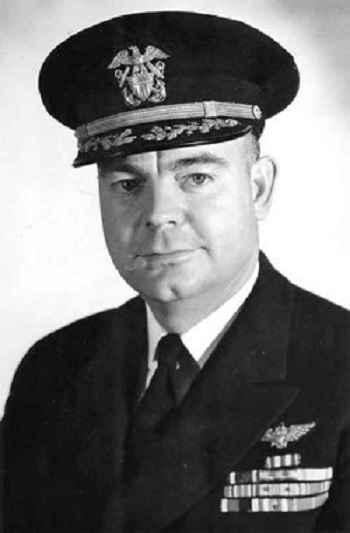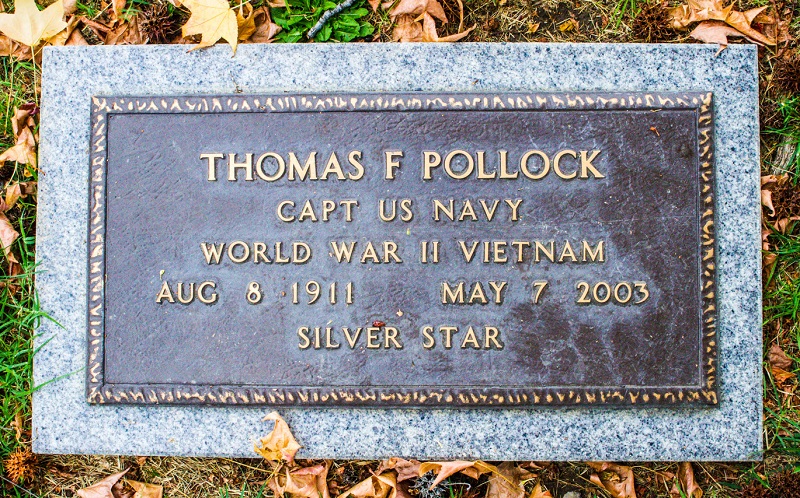|
Thomas F. 'Tom' Pollock Monrovia, CA QCWA # 06176 Chapter 7 |
 |
Birth 8 Aug 1911
Death 7 May 2003 (aged 91)
Burial
Live Oak Memorial Park
Monrovia, Los Angeles County, California, USA
OBIT: POLLOCK, THOMAS FRANKLIN, CAPT.
Author: Date: 23 Jul 2003 5:48 PM GMT
Classification: Obituary
News Review newspaper Ridgecrest CA Kern County
June 11, 2003 Front Page
CHINA LAKE'S FIRST TEST PILOT, TOM POLLOCK, DIES
With the death of Capt. Thomas Franklin Pollock, China Lake has lost a legendary hero of its proud military history. Pollock died in Arcadia, Calif. on May 7 at the age of 91.
As commander of Aviation Ordnance Development Unit One, Pollock was China Lake's first test pilot, arriving here in late 1943 with a unit that grew to 16 officers and 103 men and that had for its logo the rocket-riding rabbit so special to NOTS early-timers.
As Pollock tested aerial rockets urgently needed in battle, he had several hair-raising adventures - but the battle-hardened aviator was used to danger. He had already fired the Navy's first forward-fired aircraft rockets at Goldstone Lake on July 14, 1943 and had survived enemy fire in the Pacific Theater.
Stationed at Harvey Field in Inyokern, Pollock fired some of the nation's first aerial rockets. His personal firsts included air launch of the prototype Caltech 3.5 inch aircraft rocket (a firing so rudimentary that Pollock stuck piece of tape on his cockpit window as a makeshift bombsight), the 5 inch aircraft rocket Holy Moses, NOTS' first aircraft spinner rockets and the massive 11.75 inch 1,000 pound Tiny Tim.
Although Pollock's NOTS tour was just one assignment in a career filled with accomplishment, he had a special place in his heart for China Lake, which he considered a significant defense asset.
"Without China Lake, the nation would have been ill-prepared to defend itself and its allies in the numerous military actions that have occurred between 1943 and today," he wrote.
During a 1997 visit here, he spoke to a large, enthusiastic crowd in the Ridgecrest Council Chambers. The Historical Society of the Upper Mojave Desert and the China Lake Museum Foundation jointly sponsored his slide-illustrated talk on "China Lake - the Way It Was." In July 2003 he returned to participate in the ribbon cutting ceremony for the U.S. Naval Museum of Armament and Technology.
Born Aug. 8, 1911 in Satacoy, Calif. Pollock attended the University of California at Berkeley, leaving the university in 1933 for a job with General Electric Co. in Ontario, Calif., and service in the Army Reserves. In 1935 he began Army active duty as a second lieutenant.
He enlisted in the Navy in 1936 and was d esignated a naval aviator in 1938. He transferred to the regular Navy in 1941. His early service was in a patrol squadron that flew out of Pearl Harbor, San Diego, Java, the Philippines and Australia.
As World War II began, Pollock was in the midst of the action. When a Japanese patrol shot his aircraft down over the Philippine Sea he was able to bail out and evade a heavy rain of bullets.
"He told me that he didn't know he could swim that well underwater," said his wife Olive. "Every time he surfaced, they machine gunned him. He swam quite some distance and finally was able to get to shore, where he climbed up a cliff and hid behind a four inch tree."
In January 1942 he escaped from Corregidor to Java in USS Seawolf. Then that April, he flew a PBY more that 1.300 dangerous miles through enemy territory between Corregidor and Australia, delivering much needed medical supplies and evacuating nurses and others from a hazardous area. That courageous action earned him a Presidential Unit Citation and a Silver Star from the War Department.
Then in February 1943 after several months of preparations in San Diego, Pollock came to Inyokern, where he served until December 1944, making pioneering contributions to aerial rockets and developing techniques for magnetic detection of submarines.
In recognition of his work here, he received a letter of commenda tion from the secretary of defense for his "splendid initiative" and tireless work under extremely hazardous conditions.
Pollock next became officer in charge of Air Support Training Unit 6, developing air support tactics for amphibious operations in the Pacific. In 1945 he assumed command of Air Support Control Unit 9 assisting in the postwar occupation of Japan.
After completing a course of instruction at the Naval War College, Newport, R.I., he became commanding officer of Patrol Squadron 4, a unit that completed the first aerial survey of southeastern Alaska, covering more that 50,0000 square miles for the Department of the Interior and the U.S. Fore st Service.
During 1949-52 he was an instructor at the Armed Forces Special Weapons Project, Sandia Base, and a participant in early atomic tests at Desert Rock, Nev.
After service as executive officer USS Mindoro, he joined Commander Carrier Division 16 as operations officer in charge of antisubmarine warfare development tactics.
He became the atomic plans officer for Commander in Chief, Pacific, in 1956-58, then served as aviation budget officer in the Office of the Chief of Naval Operations.
Next he commanded USS Camisteo, then served as assistant chief of staff for operations to Commander, Antisubmarine Defense Force, Pacific. In 1961, he became commander of Fleet Air Wing 14, then commander, Fleet Air Southwest Pacific, based at Subic Point, Philippine Islands.
In 1964 he was ordered to Vietnam as deputy to the assistant chief of staff for logistics and the following year he joined the Weapons Systems Evaluation Group in the Department of Defense. He retired in November 1967 and returned to Monrovia.
During his distingui shed career, Pollock flew 29 different types of aircraft. In addition to the Silver Star, he received two joint service commendation medals, a presidential unit citation ribbon with two starts, the Order of the British Empire, British and American defense service medals, a Philippine defense ribbon, a National Order of Vietnam medal and several other decorations.
He is survived by his wife Olive, son Thomas F. Pollock Jr., daughter Joann Latuf, son Robert Pollock, five grandchildren and four great-grandchildren.
He was buried at the Live Oak Cemetery in Monrovia, with three separate services commemorating his service to his country. In addition to a graveside service, he was honored with a Commandery Knights Templar service and an American Legion gun salute and service.
